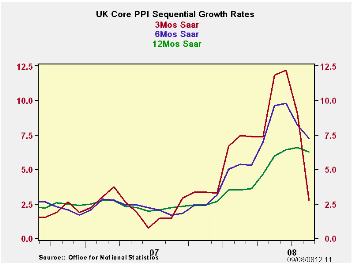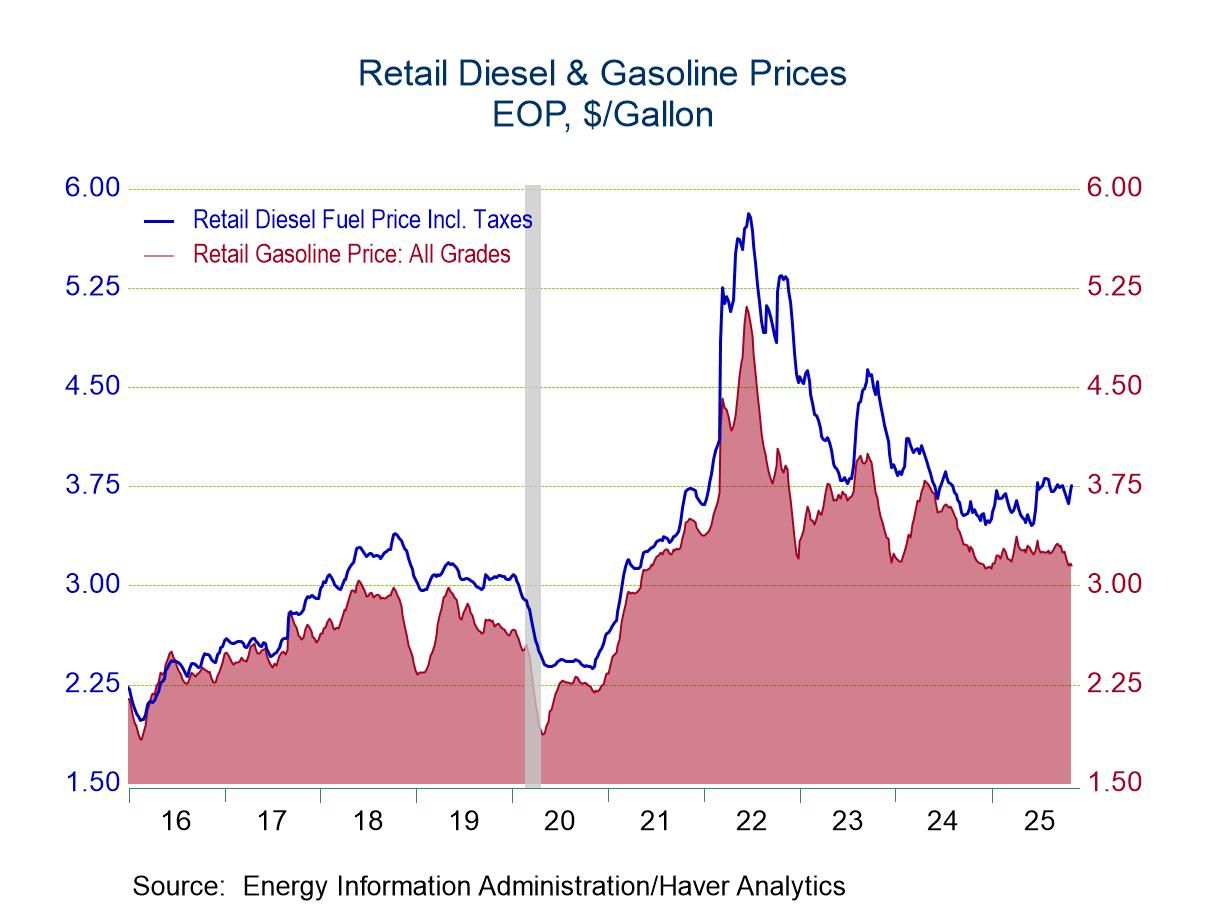 Global| Sep 08 2008
Global| Sep 08 2008A Sigh of Relief on Threadneedle Street
Summary
After a scintillating run of price increases, the UK’s PPI has finally fallen in August and the all-important core rate has dropped and decelerated. The accompanying chart shows the sharp break-off in the rate of PPI core inflation to [...]

After a scintillating run of price increases, the UK’s PPI has finally fallen in August and the all-important core rate has dropped and decelerated. The accompanying chart shows the sharp break-off in the rate of PPI core inflation to just under 2.8% over three months even as its year/year rate lingers at 6.3%. Headline inflation is still at an astonishing 9.7% year/year but the three-month pace has fallen to 3.3%. The Bank of England puts a 2% ceiling on headline consumer price inflation and has no corresponding number for the PPI or for any core measure. But with oil having dominated inflation trends, the core has to be an important signal these days. The PPI tends to be more volatile than the CPI so we cannot make any firm statements about the CPI since it will include imported goods and services prices. But the trend shift in inflation’s pace is severe. The forces bringing the PPI down should translate to the CPI. The move lower has been long awaited since spot oil prices had broken from their peaks some time ago. This sort of dramatic decline could pave the way for rate cuts even with an excessive CPI pace since the drop is indicative of an ongoing process and a deflation that is sudden and severe. It unties the hands of policymakers to some extent but contains no assurances of imminent rate cuts.
| UK PPI | |||||||
|---|---|---|---|---|---|---|---|
| %m/m | %-SAAR | ||||||
| Aug-08 | Jul-08 | Jun-08 | 3-mo | 6-mo | 12-mo | 12-moY-Ago | |
| MFG | -0.4% | 0.3% | 0.9% | 3.3% | 10.3% | 9.7% | 2.4% |
| Core | -0.1% | 0.3% | 0.4% | 2.8% | 7.2% | 6.3% | 2.2% |
| Core: ex food beverages, tobacco & Petroleum | |||||||
Robert Brusca
AuthorMore in Author Profile »Robert A. Brusca is Chief Economist of Fact and Opinion Economics, a consulting firm he founded in Manhattan. He has been an economist on Wall Street for over 25 years. He has visited central banking and large institutional clients in over 30 countries in his career as an economist. Mr. Brusca was a Divisional Research Chief at the Federal Reserve Bank of NY (Chief of the International Financial markets Division), a Fed Watcher at Irving Trust and Chief Economist at Nikko Securities International. He is widely quoted and appears in various media. Mr. Brusca holds an MA and Ph.D. in economics from Michigan State University and a BA in Economics from the University of Michigan. His research pursues his strong interests in non aligned policy economics as well as international economics. FAO Economics’ research targets investors to assist them in making better investment decisions in stocks, bonds and in a variety of international assets. The company does not manage money and has no conflicts in giving economic advice.






